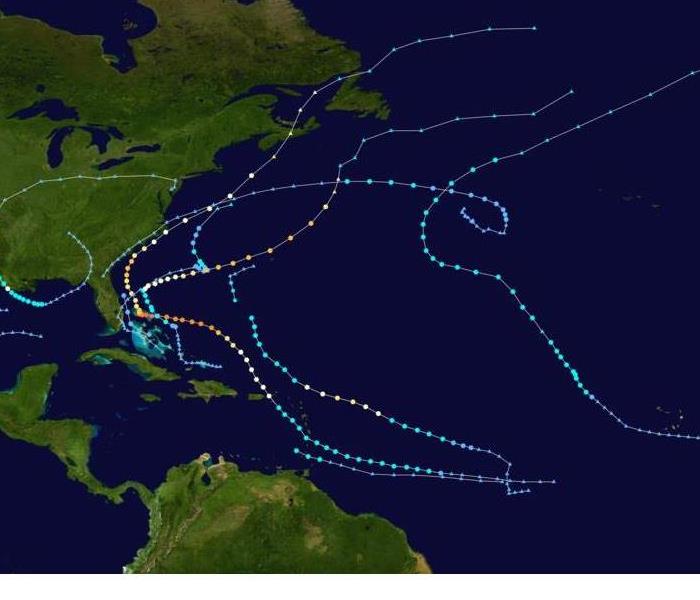Hurricane Season
9/24/2019 (Permalink)
The National Hurricane Center (NHC) forecasts each hurricane season based on probability, but of course there is no reliable way to accurately predict when and where a hurricane will reach land.
According to the NHC, it’s nearly impossible to determine a storm’s approach any sooner than 5 or 7 days in advance – a fact that is not very reassuring if you’re planning a trip months (or even weeks) in advance.
Official Hurricane Season Dates
The full hurricane season is June 1st to November 30th for the Atlantic and the Caribbean each year, and the Eastern Pacific hurricane season starts in mid-May.
What months have the most hurricanes?
The peak months for hurricanes in the Atlantic, Caribbean, and Pacific are August through early October.
The peak months for hurricanes in the southern hemisphere (Australia, New Zealand, and Hawaii) are March and April.
What months have the fewest hurricanes?
The months before and after the peak months, specifically May, June, July, and November, are the least active for hurricanes in the Atlantic, Pacific, and the Caribbean. While these are the ‘least active’ months for hurricanes, it’s still possible for a hurricane to occur during these months.
Tropical depressions vs. tropical storms vs. hurricanes
Hurricanes develop after going through the following stages:
- Tropical wave – the most common tropical disturbance characterized by wind speeds of less than 30 miles per hour and winds in every direction.
- Tropical depression – an organized system of clouds and thunderstorms with definite counterclockwise motion and maximum sustained winds of 38 miles per hour or less.
- Tropical storm – another organized system of strong thunderstorms and definite counterclockwise motion, but maximum sustained wind of 39-73 miles per hour.
A tropical storm becomes a hurricane when sustained winds reach 74 miles per hour or higher.





 24/7 Emergency Service
24/7 Emergency Service